02 Apr Folk Harp Gathering
Folk harp enthusiasts! Come celebrate...

Folk harp enthusiasts! Come celebrate...
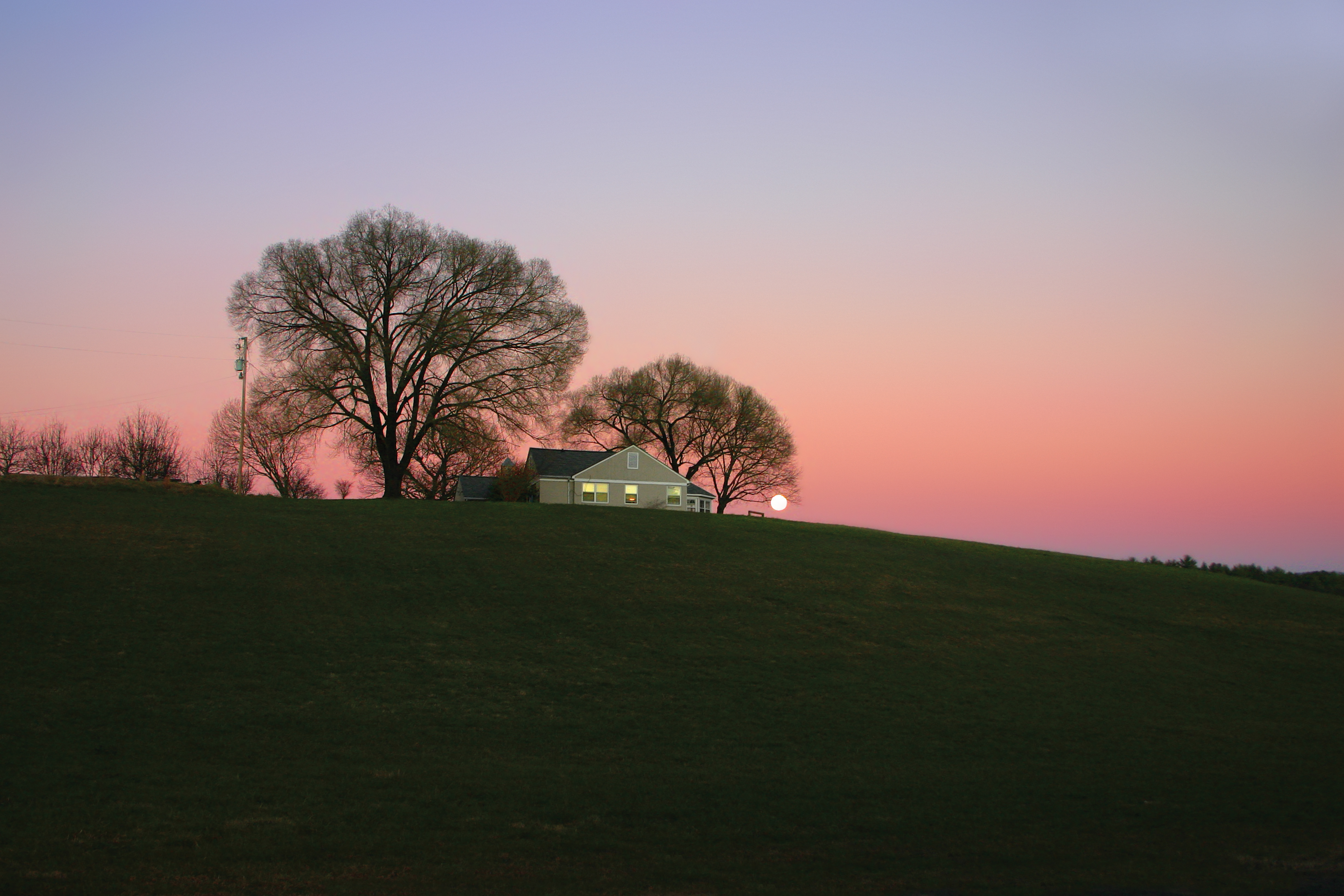 It is Thursday afternoon. Outside the writing studio window, the day is bathed in sunlight, the limb patterns on the grass motionless. Inside the studio, writers are at work with pen or laptop, or staring out the window, or sitting chin in hand. Chairs squeak, the printer clacks, the clock ticks. Small sounds that only accentuate the silence. The writing group is focused, which is different from a focus group . . . or maybe it isn’t.
I wondered, on Sunday before I arrived, who these people in the class would be, what they would be seeking, what they would be bringing. On Monday, as we tiptoed toward one another, I began to find out. Talking and listening, deciding what to offer up from our own personal stories, we began to trust. This is what I expected.
In the afternoon, we scattered across the campus, each of us to a different studio. The instructor had told us, “Write about what you are seeing, hearing, feeling there.” I heard only birdsong as I walked outside; all the other students were sequestered in class.
Rounding the mulched curve to the Woodworking Studio, I saw steam. The porch was steaming. I asked the man tending the steam if I’d found the banjo-making class. “You have,” he said. “I’m one of the instructors and I’m about to begin a steam-bending demo. Feel free to go inside and look around.” Noise! The moment I opened the studio door I was met with a wall of noise. Not from banjos playing, but machinery noise. What I saw was clusters of students working so intently that they didn’t even notice my presence. I expected to be questioned; instead, I was invisible.
It is Thursday afternoon. Outside the writing studio window, the day is bathed in sunlight, the limb patterns on the grass motionless. Inside the studio, writers are at work with pen or laptop, or staring out the window, or sitting chin in hand. Chairs squeak, the printer clacks, the clock ticks. Small sounds that only accentuate the silence. The writing group is focused, which is different from a focus group . . . or maybe it isn’t.
I wondered, on Sunday before I arrived, who these people in the class would be, what they would be seeking, what they would be bringing. On Monday, as we tiptoed toward one another, I began to find out. Talking and listening, deciding what to offer up from our own personal stories, we began to trust. This is what I expected.
In the afternoon, we scattered across the campus, each of us to a different studio. The instructor had told us, “Write about what you are seeing, hearing, feeling there.” I heard only birdsong as I walked outside; all the other students were sequestered in class.
Rounding the mulched curve to the Woodworking Studio, I saw steam. The porch was steaming. I asked the man tending the steam if I’d found the banjo-making class. “You have,” he said. “I’m one of the instructors and I’m about to begin a steam-bending demo. Feel free to go inside and look around.” Noise! The moment I opened the studio door I was met with a wall of noise. Not from banjos playing, but machinery noise. What I saw was clusters of students working so intently that they didn’t even notice my presence. I expected to be questioned; instead, I was invisible.
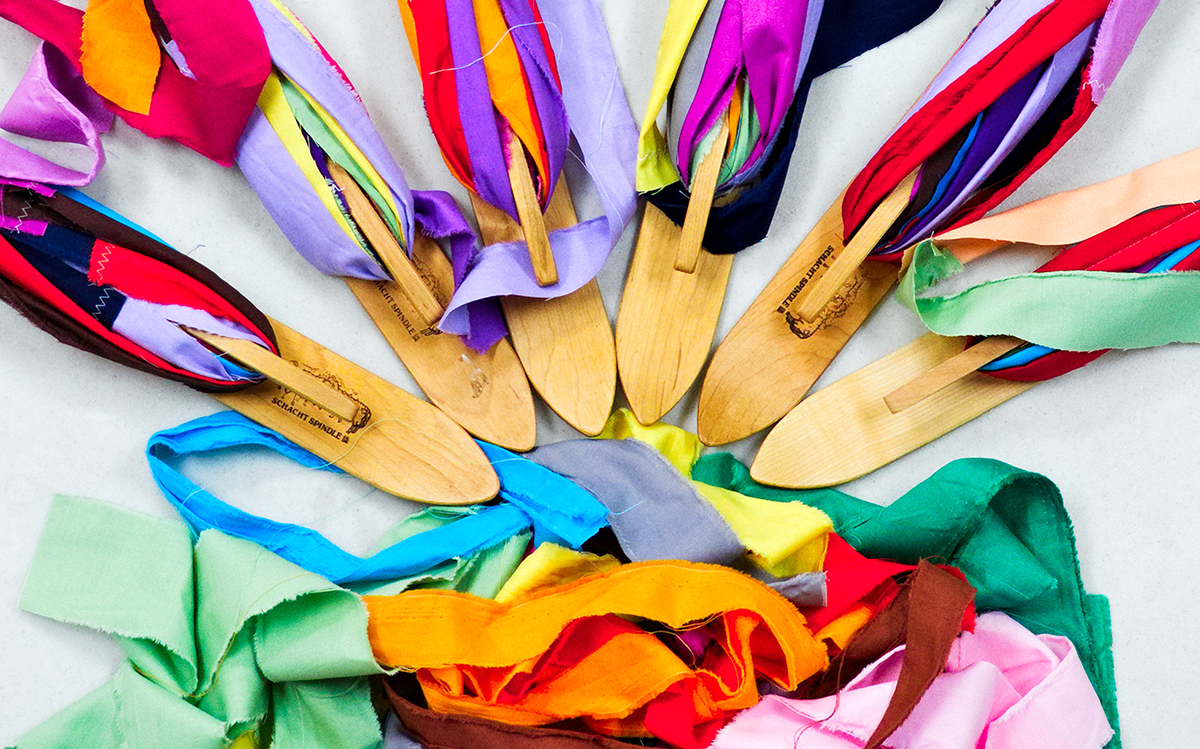 Weavers' Work Week is an annual tradition at the Folk School where skilled weavers are invited to come for a week and volunteer their time to do projects around campus and make improvements in the studio. Let's learn more about the week from Pam Howard, longtime Weaving Resident Artist.
[caption id="attachment_18687" align="alignright" width="246"]
Weavers' Work Week is an annual tradition at the Folk School where skilled weavers are invited to come for a week and volunteer their time to do projects around campus and make improvements in the studio. Let's learn more about the week from Pam Howard, longtime Weaving Resident Artist.
[caption id="attachment_18687" align="alignright" width="246"]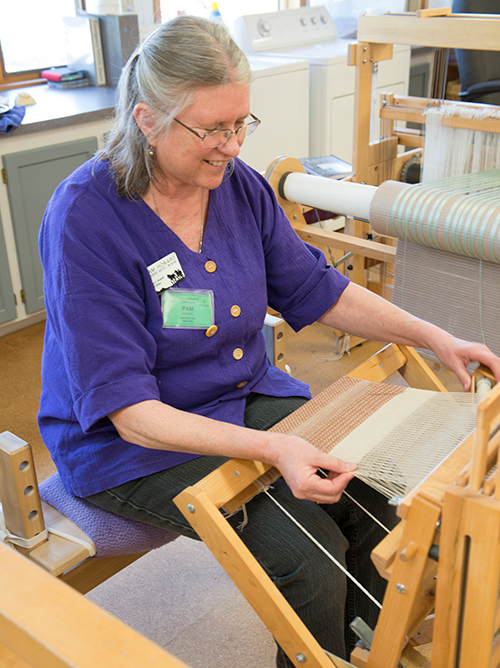 Pam Howard at the loom[/caption]
CP: What is Weavers' Work Week, and how did it start?
PH: The idea for Weavers' Work Week started in 1992. A weaving teacher, Betty Hancock Smith and her weaving student, Dee Richard were talking about how hard it was sitting all week on the loom benches. Those two got to talking about what if weavers were invited to come to the school and weave fabric to make the cushions. They asked Jan Davidson, former director and Ruth Truett, former programs director. It was approved, and in the spring of 1993 the first Weavers' Work Week happened.
I was assisting Betty in her weaving class in 1992, and I was the first weaver that was asked to participate. I have been to every one since. From 1993 to 2000, Betty was in charge of organizing the yearly event. In 2000, I became the Resident Weaver and took it over organizing it. Things went on fairly smoothly till 2008 when I had health issues and inherited relatives I had to take care of. After the dust settled and things had calmed down in my life, I thought it was time to restart the tradition of WWW. So, on February 4, 2015 I sent a letter to the “powers that be” and got Weavers' Work Week back on the schedule.
Pam Howard at the loom[/caption]
CP: What is Weavers' Work Week, and how did it start?
PH: The idea for Weavers' Work Week started in 1992. A weaving teacher, Betty Hancock Smith and her weaving student, Dee Richard were talking about how hard it was sitting all week on the loom benches. Those two got to talking about what if weavers were invited to come to the school and weave fabric to make the cushions. They asked Jan Davidson, former director and Ruth Truett, former programs director. It was approved, and in the spring of 1993 the first Weavers' Work Week happened.
I was assisting Betty in her weaving class in 1992, and I was the first weaver that was asked to participate. I have been to every one since. From 1993 to 2000, Betty was in charge of organizing the yearly event. In 2000, I became the Resident Weaver and took it over organizing it. Things went on fairly smoothly till 2008 when I had health issues and inherited relatives I had to take care of. After the dust settled and things had calmed down in my life, I thought it was time to restart the tradition of WWW. So, on February 4, 2015 I sent a letter to the “powers that be” and got Weavers' Work Week back on the schedule.
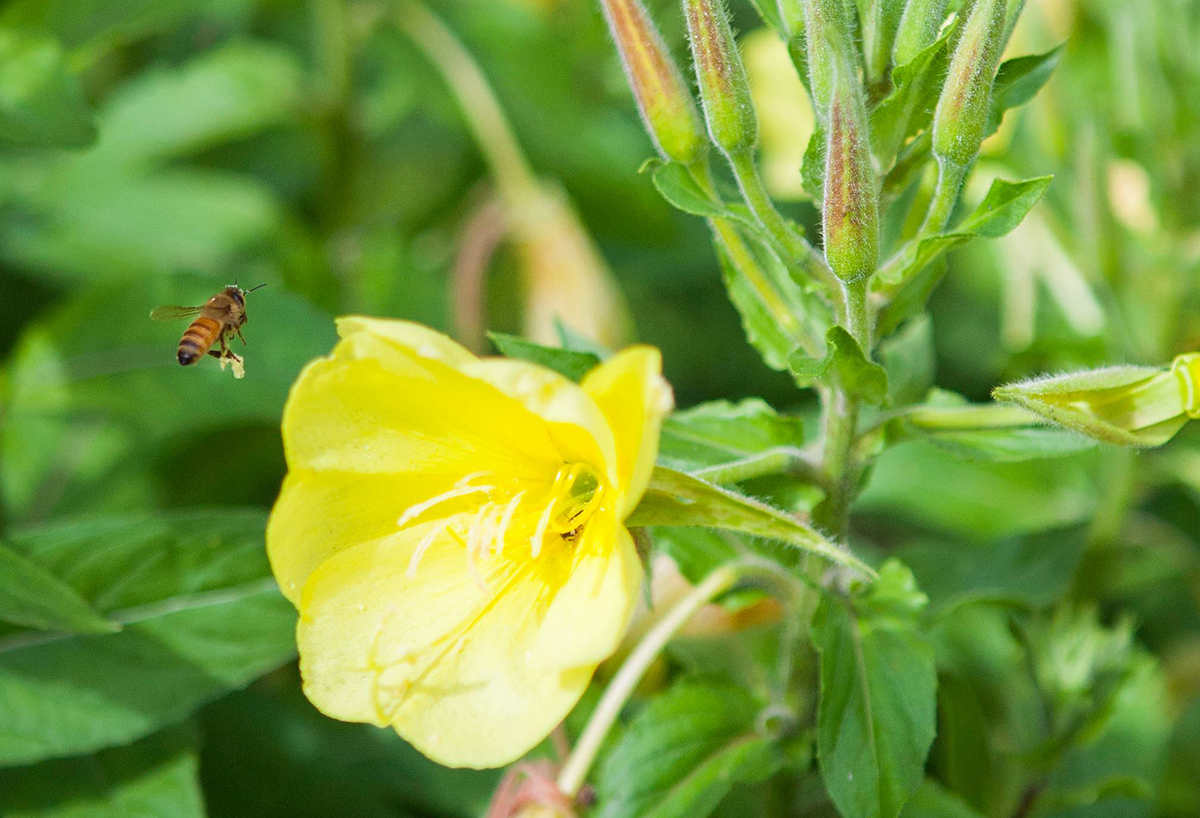 The morning after the bloom, a bee visits the Tina James Magic Primrose.[/caption]
[caption id="attachment_16955" align="alignright" width="333"]
The morning after the bloom, a bee visits the Tina James Magic Primrose.[/caption]
[caption id="attachment_16955" align="alignright" width="333"] The fresh Evening Primrose blooms at dusk[/caption]
Our Tina James Magic Primrose plants have been putting on quite a show for the past few weeks at dusk in the Vegetable Garden and behind the Painting Studio. The tightly wound yellow blooms dramatically open as night falls (around 9 p.m.). Before the show starts, visitors walk around the plant to see if they can guess which bloom will lead be the leading note of the overture. Excitement and anticipation is high and it is easy to feel giddy, like a little kid again.
The sepals (the green outside of the flower) peel down the flower and the tightly wound yellow trumpet begins to relax and open. Within seconds, before your very eyes, the blossom opens fully and settles into a large bright yellow flower with a delicate, sweet smell. It's is like watching time-elapsed photography in real time; it's just incredible. Each bloom only lasts through the night until mid-morning of the next day, attracting pollinators like bumble bees and butterflies during the morning and large humming bird-sized lunar moths at night.
The fresh Evening Primrose blooms at dusk[/caption]
Our Tina James Magic Primrose plants have been putting on quite a show for the past few weeks at dusk in the Vegetable Garden and behind the Painting Studio. The tightly wound yellow blooms dramatically open as night falls (around 9 p.m.). Before the show starts, visitors walk around the plant to see if they can guess which bloom will lead be the leading note of the overture. Excitement and anticipation is high and it is easy to feel giddy, like a little kid again.
The sepals (the green outside of the flower) peel down the flower and the tightly wound yellow trumpet begins to relax and open. Within seconds, before your very eyes, the blossom opens fully and settles into a large bright yellow flower with a delicate, sweet smell. It's is like watching time-elapsed photography in real time; it's just incredible. Each bloom only lasts through the night until mid-morning of the next day, attracting pollinators like bumble bees and butterflies during the morning and large humming bird-sized lunar moths at night.
...
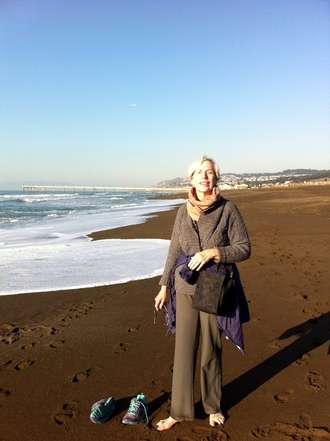 Valerie dips her feet in the sand at Pacifica, CA - always close to water.[/caption]
Valerie dips her feet in the sand at Pacifica, CA - always close to water.[/caption]
Acclaimed North Carolina writer Valerie Nieman will be teaching The Breath of Life: Discovering and Depicting Characters at the Folk School, July 5-10, 2015. This month brings the release of her second poetry collection, "Hotel Worthy."
CP: How long have you taught at the Folk School?
VN: Hard question! I don’t have a great memory for dates. Several years ago, anyway. I began by teaching weekend character development classes and then graduated to a week-long fiction session in 2013. In 2014, I taught a weekend workshop and then spent a week taking a woodworking class – my first taste of being a student at John C. Campbell. What fun! I produced two lovely occasional tables, though I had never before worked with any power tools beyond a drill. The Folk School method definitely works.
CP: What is your favorite Folk School memory?
VN: Can I offer a quilt?
The magnificent elm tree in front of the Orchard House. Cracking thunderstorms. The Whipstitch Sisters rocking the house. The coal-smoke smell from the Blacksmith Shop. “Simple Gifts” sung by a chorus of hungry workers. Purple martins. River cane whispering near the stream. Morning Song. Smiles – always smiles! Enticing smells of Indian cooking emanating from the Cooking Studio. Cohosh berries – “doll’s eyes” – beside the path. Learning to contra dance. Bees working the gardens. Creaking floors at the Keith House. The dinner bell. Mist on the fields. The sound of hammered dulcimers. Wild blackberries!
In the spirit of a...
...
We love our new wood...


